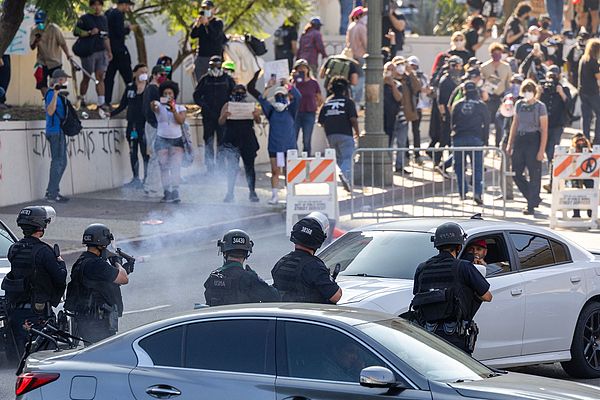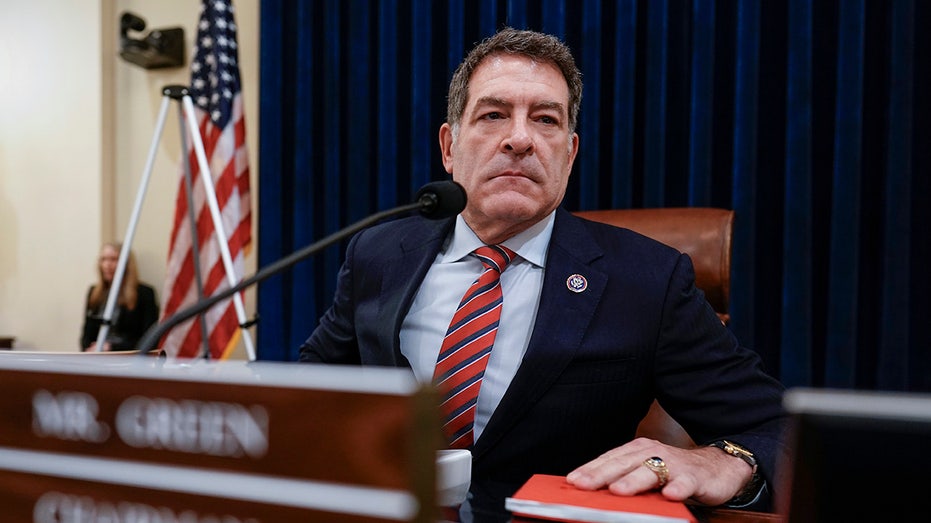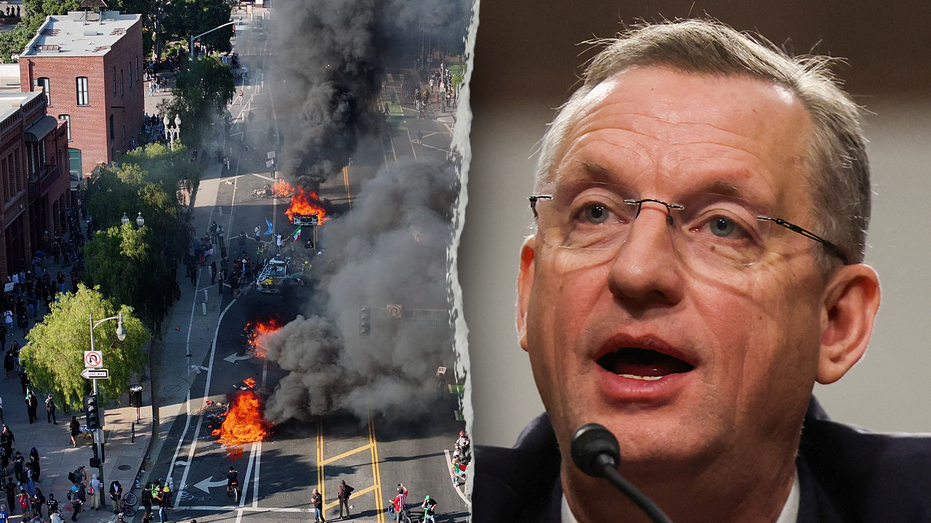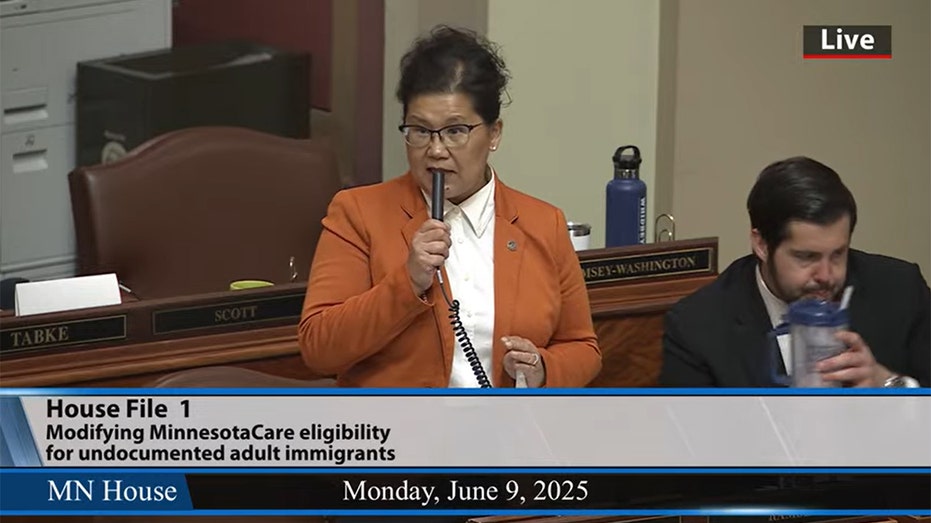Protesters Clash with LA National Guard Troops: Latest Developments and Key Facts
Tensions in Los Angeles flared Sunday as protesters clashed with police, blocking freeways and setting vehicles ablaze amid Trump's National Guard deployment.


Los Angeles was rocked by unrest on Sunday as thousands poured into downtown streets to protest President Donald Trump’s unprecedented deployment of the National Guard in response to ongoing federal immigration operations. Major freeways were blockaded and several self-driving vehicles ignited, as law enforcement responded with forceful measures including tear gas, rubber bullets, and flash-bang grenades.
With riot police forming lines behind National Guard troops and officers patrolling on horseback, the city center became a tense flashpoint. Law enforcement sought to secure key federal facilities, notably a detention center that had recently admitted dozens of immigrants. As the afternoon wore on and police declared an unlawful assembly, crowds began to thin, but pockets of resistance persisted.
Protesters scavenged makeshift defensive gear from nearby public parks, hurling objects toward advancing police lines. From the vantage point above a barricaded 101 Freeway, demonstrators launched rocks, broken concrete, electric scooters, and fireworks at California Highway Patrol officers stationed on the freeway below, forcing officers to seek shelter beneath an overpass.
This eruption marked the third consecutive day of protest in Los Angeles, following a series of high-profile immigration raids. The presence of an estimated 300 federal troops stoked further outrage among residents, leading to intense confrontations centering on several blocks of the city’s downtown core.
By morning, heavily armed National Guard members stood shoulder to shoulder outside the Metropolitan Detention Center, drawing jeers and chants of “shame” and “go home” from the growing crowd. Tensions escalated rapidly, prompting another wave of uniformed officers to advance. The air quickly filled with smoke from canisters fired to disperse the assembly.
Police later deployed additional crowd-control munitions after declaring an illegal assembly. Protesters regrouped and temporarily managed to block traffic on the 101 Freeway, a critical artery in the city, until state troopers ultimately cleared the lanes. Portions of downtown were sealed off through the evening.
Meanwhile, at least four Waymo self-driving cars were set ablaze in dramatic fashion, their batteries exploding and sending thick plumes of black smoke skyward. The resulting chaos prompted authorities to close off several blocks, as emergency services rushed to contain the fires.
In a bold move, California Governor Gavin Newsom issued a formal letter demanding the withdrawal of National Guard personnel, calling their deployment a “serious breach of state sovereignty.” Newsom met with local officials and law enforcement but did not immediately confirm direct contact with the President regarding this escalation.
The federal deployment marks a significant turning point, representing the first instance in decades where a U.S. president has activated the National Guard in a state without its governor’s request—underscoring deep divisions over the Trump administration’s approach to mass deportation efforts.
This latest wave of protests originated Friday in downtown Los Angeles before spreading to the predominantly Latino communities of Paramount and neighboring Compton. Immigration agents conducted sweeping arrests in multiple areas, including LA’s fashion district and Home Depot parking lots.
Federal authorities said more than 100 immigrants have been taken into custody throughout the Los Angeles area during the week, with dozens more arrested while demonstrating—including a prominent labor union leader accused of obstructing law enforcement operations. Demonstrators in Paramount attempted to halt Border Patrol vehicles by throwing debris, prompting further use of tear gas and crowd-dispersal tactics.
Such federal intervention recalls the events of 1965, when President Lyndon B. Johnson last sent the National Guard into a state without gubernatorial approval, then to protect civil rights marchers in Alabama. The current deployment signals a new phase in the standoff over federal immigration policy and the use of military force domestically.
President Trump, speaking to reporters as he departed New Jersey on Sunday, defended the hardline measures, stating there are “violent people” in Los Angeles and vowing that “they’re not gonna get away with it.” The situation remains tense as authorities continue efforts to restore order and both sides brace for what could be a protracted confrontation.




